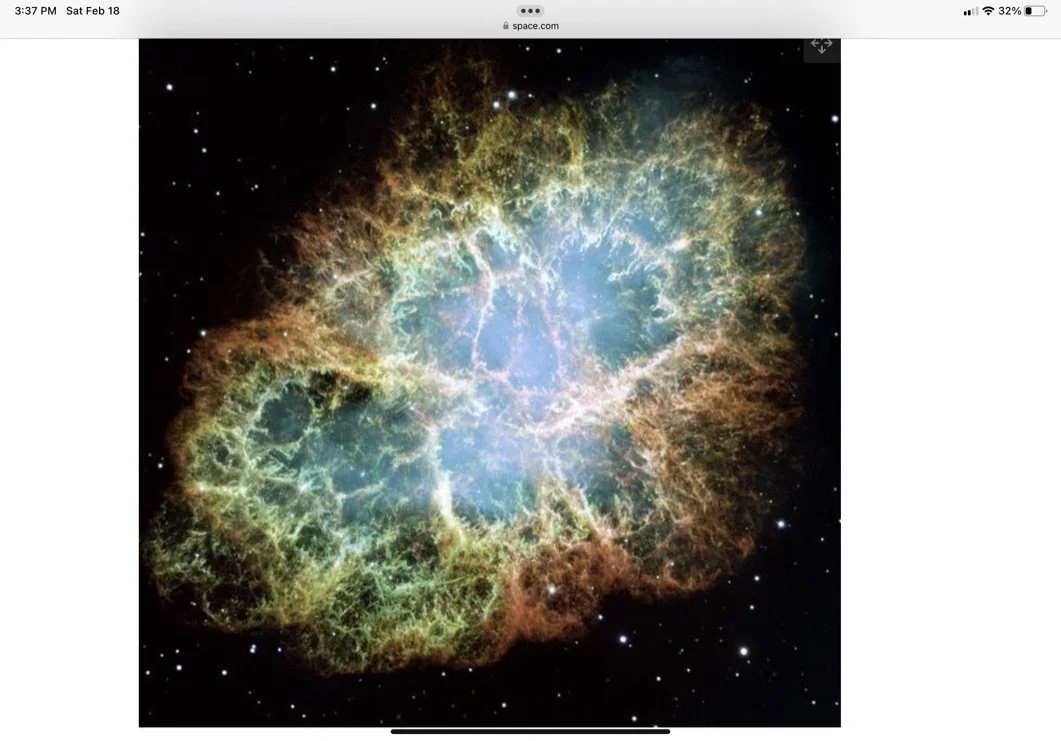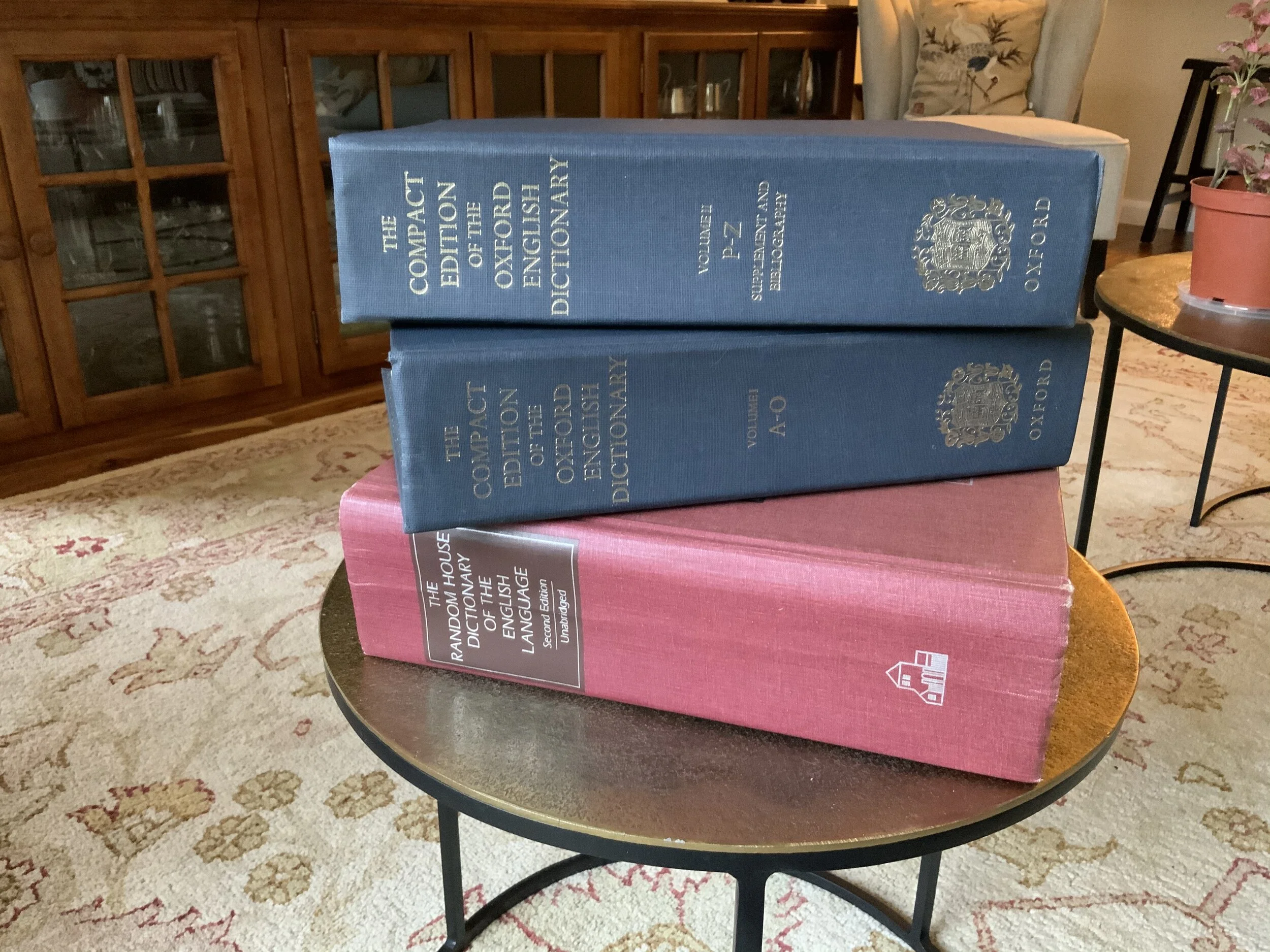#36 A WOMAN'S BRIEFS: "WHAT'S NEXT?"
A Woman’s Briefs –
One second! That’s all it took. POW! One second, plus perhaps a zeptosecond or two and a minor star in the constellation of Taurus exploded into a supernova. Not that it matters a whole lot to most of us, but a zeptosecond is a trillionth of a billionth of a second.
For the next three months its light at night was bright enough to read by, said those who recorded the event. It shone four times brighter than Venus; even bright enough during the first twenty-three days to easily spot while the sun was in the sky. The whole thing remained evident for the next 633 nights. At least that was the news about the “guest star” reported by Chinese, Korean, and Japanese astronomers paying attention to the sky on July 5, 1054. We weren’t there to see it, but our fabulous Hubble telescope has provided pictures of the explosion’s remains, the Crab Nebula (see below).
Europe seemed not to be paying much attention to the sky that July night, nearly as I can obtain. Henry I of France was engaged in a fight he started against William the Bastard, Duke of Normandy. Alas, the king was defeated at Mortemer (‘mort’ meaning ‘die,’ and ‘mer,’ lake or sea; a perfect word to describe the smelly, stagnant water of the Pay de Bray’s marshland). It is likely Henry could bear the marshland stench, if only he could claim Mortemer castle built by Northmen from Scandinavia, those descendants from Vikings who, for the last 200 years, had been raiding Europe.
Who had time in Rome or Constantinople to look to the sky? The German Pope Leo IX and the Turkish Patriarch of Constantinople, Michael Cerularius, were doing a dance of dodging the many excommunications they threw at one another. The Great Schism between followers of the Prince of Peace was made permanent the year the minor star exploded. I don’t know in that great divorce, how they divided up disputed lands or Gregorian chants, but it would be about 600 years before the church got concerned about what was going on in the sky; that the fault of Mr.Galileo Galilei who was looking up.
And the British Isles? If I’ve read rightly, the last Anglo-Saxon king, Edward the Confessor, was ruling England at this time, and he was well distracted with killing off Vikings and Danes, and cousins that coveted his throne. It’s possible that the British superstition of “Dare not point to a star” was popular in 1054. Word was, if you pointed to a star (which may well be a god who doesn’t like being pointed at), your finger would freeze in that position. It makes sense then that England has no record of the 1054 explosion. At least, who would admit pointing to the sky, saying, “What’tha!?”
Here's the thing about supernovas. For millions or billions of years, depended on a star’s size, it evolves until finally (and what does ‘finally’ mean in a count of billions?), when hydrogen in the star’s core has fused to form helium, it becomes a red supergiant with its helium core surrounded by cooling, expanding gas. Over the next millions of years, a bunch of nuclear reactions result in a slew of elements in shells around the star’s iron core (remember, the core of our own dear planet is iron).
Cut to the chase. The star burns through its fuel, starts cooling, outward pressure drops, gravity moves in like a schoolyard bully, and in seconds, plus maybe a zeptosecond or two, POW! After all those millions or billions of years of development, the star explodes.
If you’re interested, here’s where my mind went with this information:
We mortals don’t have millions of years to develop something spectacular, or something that matters to us, but we do sometimes invest heavily in projects, relationships, adventures, beliefs, health; things that matter to us but for a variety of reasons—POW! That which mattered, a lot, explodes, collapses, misfires, or fails.
I’m thinking of life explosions, collapses, failures common to human experience. I’m thinking how harmful it is if we think the fire, the divorce, the death, the failed recipe, the broken leg, the vocal cord surgery, the lost manuscript, the (you name it) is the end of anything. It’s not. At least not completely. It is the end of what was. As it was with the minor star in the constellation of Taurus, it’s the beginning of what is next.
An exploded star becomes Supernova. No big deal, really. One occurs in the universe every ten seconds. A Supernova blows new, enriching elements out into space clouds of dust and gas. This is good, this “what’s next” interstellar diversity. The death of a star produces a shock wave that compresses masses of gas to aid the formation of new stars. This is so good! What was, isn’t any longer. But what was led to the possibility of a positive “what’s next,” if we are willing to think that way. I need to remember this while I search for an essay I wrote some years ago for the Anderson Cancer Clinic. It’s missing.
CRAB NEBULA






